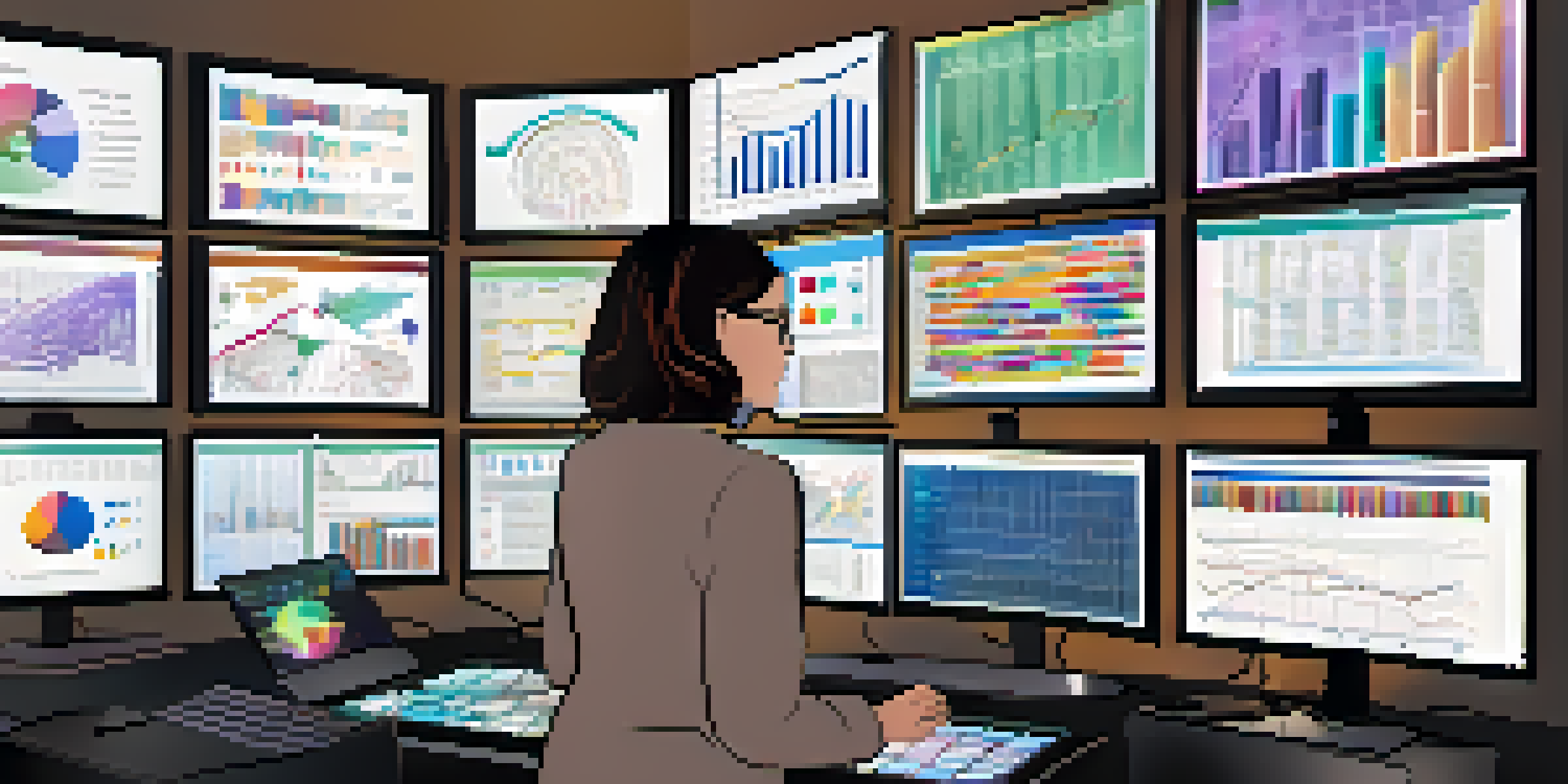Biostatistical Software: Tools for Analyzing Health Data

Understanding Biostatistics and Its Importance
Biostatistics is a branch of statistics that applies statistical methods to biological, health, and medical data. It's crucial for analyzing health trends, evaluating treatments, and making informed public health decisions. Think of biostatistics as the bridge connecting raw health data to meaningful insights that can improve patient outcomes.
Without data, you're just another person with an opinion.
In the realm of healthcare, biostatistics helps researchers determine the effectiveness of new medications, track disease outbreaks, and assess risk factors for various health conditions. Without these statistical analyses, we would struggle to understand the efficacy of treatments or the spread of diseases. Therefore, biostatistics plays a vital role in evidence-based medicine.
Furthermore, as healthcare continues to evolve with advancements in technology and data collection, the demand for skilled biostatisticians is on the rise. This makes biostatistical software not only essential but also a valuable asset for professionals in the field.
Key Features of Biostatistical Software
Biostatistical software comes equipped with a range of features designed to make data analysis efficient and effective. Common features include data management tools, statistical modeling capabilities, and visualization options. These tools allow users to not only analyze data but also present it in a way that's easily understandable.

For instance, many software packages offer built-in functions for common statistical tests like t-tests, ANOVA, and regression analysis. This means that healthcare professionals, even those without extensive statistical training, can perform complex analyses with relative ease. The ability to quickly access these functions can significantly speed up research processes.
Biostatistics Enhances Health Insights
Biostatistics bridges raw health data to meaningful insights, playing a crucial role in evidence-based medicine.
Additionally, user-friendly interfaces and comprehensive documentation make these tools accessible to a wide range of users. This accessibility encourages collaboration among researchers, clinicians, and public health officials, ultimately leading to better health outcomes.
Popular Biostatistical Software Options
There are several popular biostatistical software options available today, each with its own strengths and weaknesses. Some of the most commonly used programs include SAS, R, SPSS, and Stata. Each of these tools has carved out a niche in the field of biostatistics, catering to different user needs and expertise levels.
Data is the new oil. It's valuable, but if unrefined it can't really be used.
For example, R is an open-source software that has gained immense popularity due to its flexibility and the vast number of packages available for specialized analyses. On the other hand, SAS is a powerful tool often used in large-scale studies and clinical trials, favored for its robust data management capabilities. Understanding the unique features of each software can help professionals choose the right tool for their specific projects.
Moreover, many of these software options provide extensive support communities and resources, making it easier for users to troubleshoot issues or learn new techniques. This support can be invaluable, particularly for those new to biostatistics.
The Role of Data Visualization in Biostatistics
Data visualization is a crucial aspect of biostatistics, as it allows researchers to convey complex statistical findings in a visually appealing and understandable manner. Charts, graphs, and plots can help identify trends, patterns, and outliers that might not be immediately apparent in raw data. This visual representation can make a compelling case for research findings.
For instance, a well-constructed histogram can illustrate the distribution of a variable, while a scatter plot can depict the relationship between two variables. These visual tools not only enhance the clarity of presentations but also aid in the decision-making process for healthcare professionals. After all, a picture is worth a thousand words.
Data Visualization Simplifies Analysis
Effective data visualization in biostatistics helps convey complex findings clearly, aiding decision-making for healthcare professionals.
With many biostatistical software programs offering advanced visualization capabilities, users can easily create custom graphs and charts tailored to their specific needs. This feature enables researchers to communicate their findings effectively to both scientific and non-scientific audiences.
Integrating Biostatistical Software with Other Tools
In today's digital age, the ability to integrate biostatistical software with other data management and analysis tools is increasingly important. Integration allows for seamless data transfer between platforms, enhancing the efficiency of research workflows. For instance, researchers might use Excel for initial data entry and then import that data into R for more sophisticated analysis.
Furthermore, many biostatistical software programs can connect with databases, allowing users to pull in real-time data for analysis. This integration is particularly useful in epidemiological studies where timely information can significantly impact public health responses. The ability to work with various tools and data sources can enhance the versatility of research projects.
As the complexity of health data grows, so does the necessity for biostatistical software to adapt and integrate with emerging technologies. This adaptability ensures that researchers can keep pace with advancements and continue to derive meaningful insights from their data.
Challenges in Using Biostatistical Software
While biostatistical software offers many benefits, users may face certain challenges when utilizing these tools. One common issue is the steep learning curve associated with some software, particularly those that require programming knowledge, like R. New users may feel overwhelmed by the amount of information and options available, leading to frustration.
Additionally, data quality can pose a significant challenge. Inaccurate or incomplete data can skew results, rendering analyses ineffective. It's vital for researchers to implement rigorous data cleaning and validation processes before analysis to ensure the integrity of their findings. This step is crucial for maintaining the credibility of research outcomes.
Integration Boosts Research Efficiency
Integrating biostatistical software with other tools enhances research workflows and enables real-time data analysis.
Lastly, the rapid evolution of software features can also be daunting. Keeping up with updates and new functionalities requires time and effort, which can be a barrier for busy professionals. However, investing in training and continued education can help users stay current and maximize the potential of these powerful tools.
The Future of Biostatistical Software in Health Research
Looking ahead, the future of biostatistical software is bright, with continuous advancements poised to enhance data analysis in health research. As big data becomes more prevalent in healthcare, biostatistical tools will need to evolve to handle larger datasets and more complex analyses. This adaptability will be key in addressing emerging health challenges.
Artificial intelligence (AI) and machine learning are already beginning to influence how biostatistical software functions. These technologies can automate data analysis processes, uncover hidden patterns in data, and even predict health outcomes. As these capabilities expand, they will empower researchers to make more informed decisions based on comprehensive data insights.

Ultimately, the ongoing development of biostatistical software will play a pivotal role in shaping the future of healthcare research. By embracing these advancements, researchers can enhance their ability to analyze health data, leading to improved health interventions and outcomes for populations worldwide.